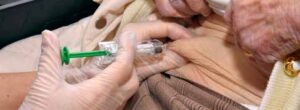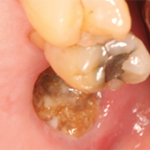 NEW YORK (Reuters Health)—Long-term glucocorticoid users see greater gains in spine bone-mineral density when treated with the monoclonal antibody denosumab vs. oral alendronate, a small clinical trial shows.
NEW YORK (Reuters Health)—Long-term glucocorticoid users see greater gains in spine bone-mineral density when treated with the monoclonal antibody denosumab vs. oral alendronate, a small clinical trial shows.
The drug also proved superior at lowering bone-turnover markers at 12 months, researchers in Hong Kong report in Bone.1
“Denosumab may be considered as an alternative first-line therapy in higher risk patients using chronic glucocorticoids and in those who are contraindicated for or intolerant to” bisphosphonates, Dr. Chi Chiu Mok of Tuen Mun Hospital and colleagues write.
“The strength of our study is that this is not a commercially sponsored trial,” he tells Reuters Health by email. “The weakness, of course, is the relatively short follow-up time and the sample size from one center. Yet, we feel that it is important to have data in purely Asian patients.”
Previous randomized controlled trials have shown denosumab to be superior to bisphosphonates in postmenopausal women, but there is a lack of data from long-term steroid users, particularly Asians, the researchers note.
To investigate, they recruited 139 patients who were receiving long-term prednisolone therapy (at least 2.5 mg/day for at least one year) to a year-long study. All of the patients, 96% of whom were women, were being treated for autoimmune inflammatory diseases as outpatients at Tuen Mun clinics.
Half were randomly assigned to receive denosumab injections (60 mg every six months) and half to receive oral alendronate (70 mg per week). The alendronate group had a higher number of chronic smokers, but there were no other significant differences between the groups.
The patients’ mean age was 50 years and their mean BMI was 23 kg/m2. At the start of the study, they had been taking prednisolone for a mean of 107 months at a mean daily dose of 5.1 mg.
The majority of the patients (59%) had never been previously treated for osteoporosis, whereas the rest had been taking oral bisphosphonates. With one exception, all the patients were ethnic Chinese.
After 12 months, gains in bone-mineral density (BMD) at the lumbar spine favored denosumab-treated patients (3.5% vs. 2.5%), with significantly higher BMD after adjusting for baseline BMD values, age, sex, osteoporosis risk factors and cumulative prednisolone doses received in one year (P=0.045).
Differences in hip and femoral-neck BMD were not statistically significant between the groups.
Denosumab-treated patients showed significantly greater drops in the levels of serum P1NP (53% vs. 22%) and beta-CTX (57% vs. 5.3%) at the 12-month point.
